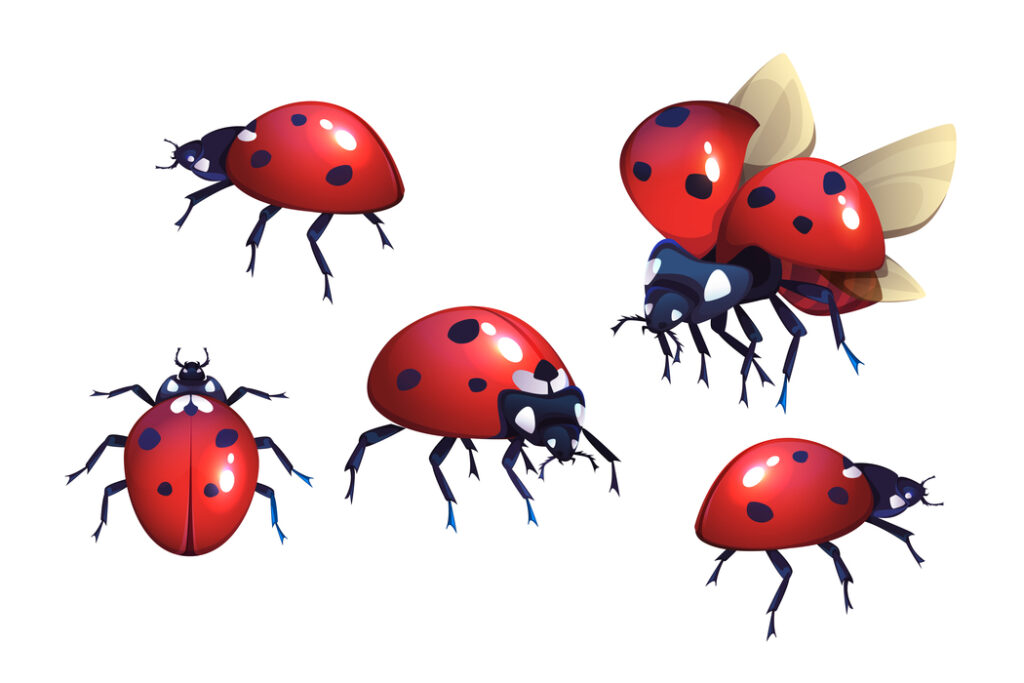A Ladybug is an insect that belongs to the family Coccinellidae. These tiny insects are usually between 0.8 and 18 mm in size. They are common in North America and Great Britain. Their distinctive colouration is a source of fascination for people. Read on to learn more about them. This article will help you identify a lady bug and its life cycle. Also, learn more about its diet and flight. You will be able to identify this insect without needing to seek a pesticide.
Identifying a lady bug
There are several common tips for identifying a lady bug. These include the use of pictures. Often, the wings of a lady bug have a distinct pattern or colour. The body and neck area are black. Sometimes a black ladybug will have red spots. There are several different species in the Hippodamia genus. The following are a few common ones and how to tell them apart. Hopefully, the information here will help you identify one of these bugs.
Asian lady beetles: These insects look very similar to ladybugs. But they are not the same species. Although they belong to the same family, they are very different in appearance and behaviour. Asian lady beetles tend to invade native ladybug habitats and outcompete them for resources. Fortunately, ladybugs are beneficial insects that feed on garden pests. However, you must learn to identify them to keep them out of your garden!
Life cycle
The ladybug’s life cycle begins when two adult females mate. The female then lays her eggs on plants that are useful to her offspring. The eggs are bright yellow and show no definitive form before hatching. The pupa takes one to two weeks to hatch, and the larva is no longer visible. After hatching, the ladybug will live for three months to three years, producing many generations a year. The life cycle of lady bugs can be seen in a garden.
After mating, the female ladybug will remain in the same place until her eggs are laid. She will then stay until the eggs hatch, a process that can take three to four months, depending on the food sources. Once the eggs are laid, the male ladybug will move on and the female will stay until the eggs hatch. Then, the young will leave the nest and find their own food source. During this time, the larvae will not mate.
Diet
One of the most intriguing facts about lady bugs is that they eat five different kinds of fungi. Fungi include mushrooms and mildew. One subspecies of ladybugs is fungus-eating. This fungi-eating subspecies eats a variety of different plants, including aphids and leafy greens. Fungi are excellent sources of minerals and salts, which are necessary for the health of these insects.
These insects prefer soft-bodied, scale-like insects. Because they are slow-moving, these insects are easy to catch and consume. Some types of ladybugs also feed on pollen and nectar or will consume mites and fungus. As for the eggs, adult ladybugs will consume them as well. Lady bugs can consume up to 5,000 aphids in their lifetime. While their lifespan is short, they are known to be active around dawn and dusk, so they don’t spend much time feeding.
Flight
A womanbugs life cycle is relatively short. The insects lay yellow eggs on tree branches and feed on them for about three weeks. During this time, they undergo diapause. During the winter months, lady bugs hibernate, and they can spend up to nine months on the ground. They cannot fly until the temperatures rise, however. This is one of the reasons they are so attractive to gardeners.
The fluttering movement of the ladybug is a great way to attract attention to your garden or your home. They are members of the Coccinellidae family, and they go through several stages, including the egg, larval, pupa, and adult. Aphids are their primary food source, and female lady beetles can consume up to seventy aphids a day. Males can feed on about 40 aphids per day. They are mainly plant-eating insects, but there are some instances where they can become a crop pest.
Habitat
Lady bugs are found in a variety of habitats. They may live in forests or grasslands, as well as in cities and suburbs. They can also be found in swarms along rivers. Their eggs are laid on the underside of leaves, and they may play dead when threatened. Lady bugs can live in colonies of thousands. They can be easily spotted on a leaf in spring, and they may huddle together to protect themselves during the winter.
Although ladybugs live in many habitats, they do prefer a temperate climate and dense vegetation. They don’t require constant moisture, and their larvae can survive without a constant supply of it. They are diurnal and thrive in sunny, bright conditions. They hibernate in winter, but generally only live for a few months. Some ladybugs are social and live alone. Others live in groups, especially during migration and winter.
Also Read: Traps Using for Pest Control

